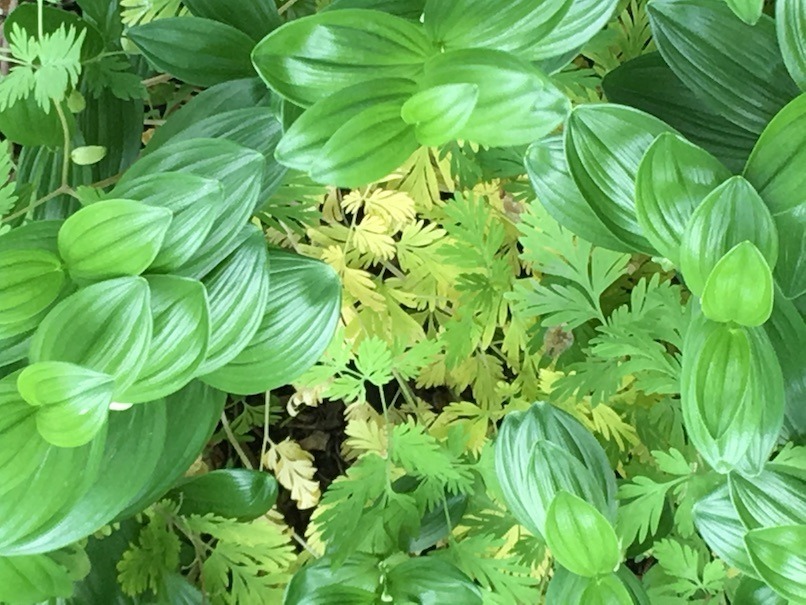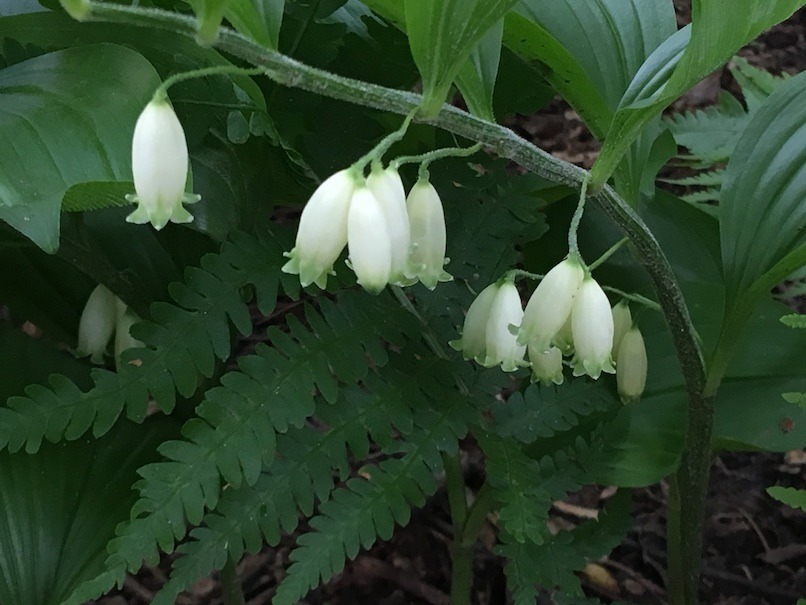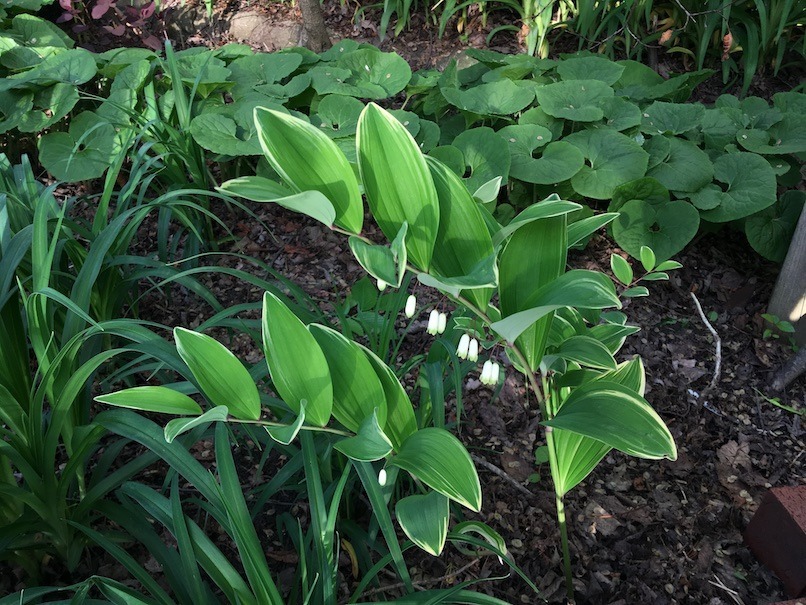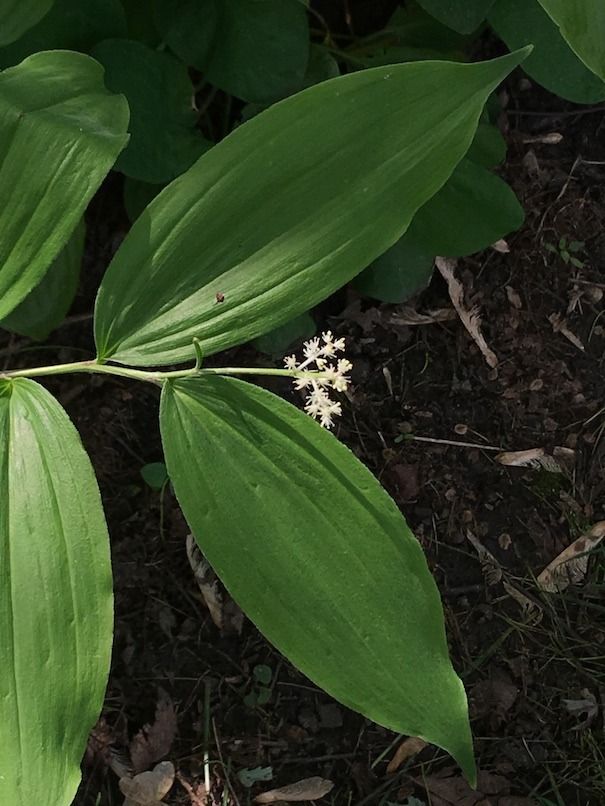I never thought of Solomon’s seal as a garden plant—it was a plant from botany field trips into the woods in college, so I was struck by a neighbor’s planting of dwarf Japanese Solomon’s seal, Polygonatum humile, several years ago. They had planted it in a shady little patch of earth on a street corner with road on one curved side, and sidewalk on the other two sides. At about 6 inches tall, it is a very nice orderly little plant for such a small space. They stand sturdily upright, about a leaf-and-a-half’s distance from stem to stem—with a great texture, and serve as a very nice ground cover.

Meanwhile, I had a spot under a pawpaw that I just couldn’t get quite right. I wanted a definite textural contrast with the narrow strip of lawn that surrounds its bed. One day I was looking through a local garden shop’s offerings and discovered a big and rather expensive pot of dwarf Japanese Solomon’s seal. I could see them under that pawpaw—the price gave me pause, but I bought the plant.
Plants. I had been hoping to divide the potted clump in thirds or perhaps in half, but when I turned the pot out to plant it, the clump fell apart into many, many individual and small clumps of plants. I changed my plans fast and had a nice swath, instantly.
They filled in very nicely, but occasionally the bed needs tidying. It is an easy plant to rearrange, so I have dug up and moved these Dutchman’s breeches under the hostas that are under the witch hazel, and redistributed the Solomon’s seal to fill the little gap.

Solomon’s seal seems to be appearing here and there. During an expedition to another local garden shop that carries a lot of native plants, I found another Japanese Solomon’s seal, Polygonatum latifolium ‘Heronswood,’ and promptly fell in love. The flowers are just beautiful. The foliage, smooth on both sides, is a lovely shade of green. The plant is an excellent groundcover height—off the top of my head, a little less than a foot tall. Three large pots filled a good-sized area under the serviceberry.

I gave a neighbor’s father some bluebells, and in return, he gave me some variegated Solomon’s seal, Polygonatum odoratum var. pluriflorum ‘Variegatum.’ It always looks ready to take flight to me, especially when the early morning light strikes it. These have recovered very nicely from my farmer chipmunks.

The last member of the Solomon’s seals is the only native one and the first one in my garden—a small clump of false Solomon’s seal, Maianthemum racemosum—their starry flowers are at the ends of their stems. These live at one end of my big hosta border, serving as a transition from the hostas to the autumn clematis climbing the arbor.

These amiable garden companions are low maintenance and pest free, and according to the Missouri Botanical Garden, they are in the asparagus family, and are recommended for rain gardens—in the shade.